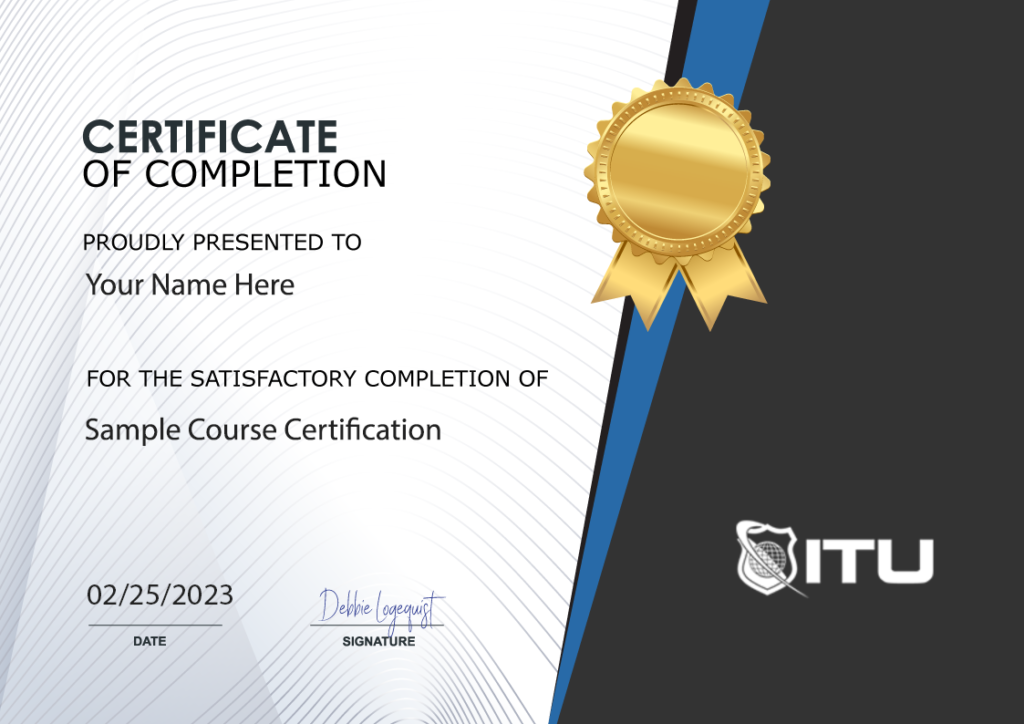
Lifetime
An ITU Online Training exclusive. The only Buy Once, Never Pay for IT training again program available. Plus, get all new and updated content for life.

With an All-Access Pass, you get access to every current and future ITU course. Access over 2,500 hours of on-demand IT Training 24/7. With over 13,000 on-demand training videos and 19,000+ practice questions, you'll have the tools to excel in the critical IT skills needed to elevate your IT Career. Our All-Access pass is available in three affordable plans.
Paris is the capital of France.
Tokyo is the capital of Japan.
Most Popular
Categories

With an All-Access Pass, you get access to every current and future ITU course. Access over 2,500 hours of on-demand IT Training 24/7. With over 13,000 on-demand training videos and 19,000+ practice questions, you'll have the tools to excel in the critical IT skills needed to elevate your IT Career. Our All-Access pass is available in three affordable plans.

ITU provides a vast array of IT-focused on-demand training designed to help you excel in both entry-level and advanced IT skills. Browse our most popular training or take a deper dive into our robust catalog of training categories.
Popular Courses All Categories




The CompTIA CNVP is an invaluable certification specifically crafted for IT professionals with 2 to 5 years of experience. This stackable program provides the course materials required to not only earn your Security+ and PenTest+ certifications, but also allows you to excel in your knowledge as a cybersecurity specialist.
Included In This Course
Closed Captions
Certificate of Completion
Course Description

The CompTIA CNVP is a stackable certification by CompTIA. It is designed for IT professionals and Operations Specialist with 2 to 5 years of experience. The ITU Certification Path for the CompTIA CNVP certification consists of the learning materials to allow you to study for and pass the CompTIA Security+ and CompTIA PenTest+ certification exams.
Completing this path and passing the two certification exam means you end of with two CompTIA certifications and are a designated a CompTIA Network Vulnerability Assessment Professional (CNVP).
The two courses contained in this path are:
Upon successfully passing the applicable exams provided by CompTIA, you will earn the CNVP certification badge.
For more information on CompTIA Stackable Certifications, visit the CompTIA website. Pricing charged by CompTIA varies by exam. For details on current pricing, visit CompTIA Pricing on their website.
The CompTIA CNVP (Network Vulnerability Assessment Professional) is a stackable certification specifically designed for IT professionals with 2 to 5 years of experience. The certification equips learners with the knowledge and skills required to scan applications and systems to identify vulnerabilities, enhancing their expertise as cybersecurity specialists.
The ITU’s CompTIA CNVP certification path includes two courses: CompTIA Security+ and CompTIA PenTest+. Successfully passing the exams associated with these courses qualifies you as a CompTIA Network Vulnerability Assessment Professional.
The CompTIA CNVP certification covers a broad range of skills, including Access Control, Application Security, Cryptography, Network Security, Penetration Testing, Reconnaissance, Risk Management, Security Exploits, and Vulnerability Assessment.
The ITU’s CompTIA CNVP certification path provides 55 hours of training, which includes 296 videos covering 27 topics and 498 practice questions.
You can access the CompTIA CNVP certification path training and over 2,500 hours of on-demand content with the ITU’s All Access Monthly Subscription. You can start with a 7-day free trial, and there’s no obligation to continue; you can cancel anytime.
To earn the CompTIA CNVP certification, you need to pass the exams for the CompTIA Security+ and CompTIA PenTest+ certifications.

Course Outline
Chrys Thorsen is an education and technology expert who specializes in enterprise-level IT infrastructure consulting and certified training-of-trainers. In her career, she has garnered over 50 IT Certifications including CISSP, CISA, CEHv12, PenTest+, CompTIA CNVP, Cisco CCSI/CCNP, Microsoft Cloud and on-premises technologies, VMware vSphere, and many more. She has also authored 40 published certification textbooks, and over 35 full-length IT certification video courses.
When not working in the United States, Chrys spends her time abroad capacity-building IT literacy in developing nations in Sub-Saharan Africa. Her client list has included: the US Federal Government, the Republic of Zambia Ministry of Health, Cavendish University Zambia, Accenture, JP Morgan Chase, the US Centers for Disease Control and Prevention, the Elizabeth Glaser Pediatric AIDS Foundation (EGPAF), Hughes Aircraft, Microsoft, and many more.
Chrys lives by, and is fond of repeating, her professional creed:
“The only true measure of success for any project or training is results on the ground. Everything else is just noise.” “I teach what I deploy; I deploy what I teach.”
Professor Brian O'Hare has over 25 years of experience in the IT industry. He started off in web design as a Corporate Webmaster but wanted to understand how the internet worked. While working towards his bachelor’s in computer science, he studied and got his MCSE (Microsoft Certified Systems Engineer) and his MCT (Microsoft Certified Trainer). Once certified he paid for his degree working as a Network Engineer and then a Trainer for others wanting to learn about Microsoft’s Desktop and Server products.
$59.00
Gain access to this training and all our other courses, offering over 2,500 hours of content, with our cost-effective monthly subscription. No obligations. Cancel anytime.

Monthly All-Access Subscription
7 Days Free - $39.00 / month
A great option at an affordable monthly price.
Annual All-Access Subscription
$229 / year
A discounted price when paying for your All Access library on an annual basis.
Lifetime All-Access Library
$379 One time payment
Exceptional Value. Pay once, never have to buy IT training again.
$79.00 $47.40
Get all 12 CompTIA courses for one low price in this comprehensive training series. Our CompTIA certification training courses are comprehensive, providing IT professionals with 12 courses that feature the Core Series for A+ certification as well as introducing our innovative IT Fundamentals (ITF+) course! Furthermore, we have PenTest+, Security+, Cloud+ and Network+. For those seeking to become an expert in IT certifications – this is the training product for you!
$59.00
In this IT course you will learn a thorough understanding of the information security risks and mitigation strategies critical to data security in the Cloud. This CompTIA IT course will teach you strategies for protecting data at rest and data in motion as well as strategies for safe-guarding data, classifying data, ensuring privacy, assuring compliance with regulatory agencies, and working with authorities during legal investigations.
$49.00
Are you an IT professional looking to enhance your knowledge of secure cloud environments? You may work as a consultant, technical services provider, or cloud architect today. Our CompTIA Cloud+ Essential IT training program is for you if you are. Our program is a great starting point to jumpstart your IT training and enhance your cloud computing skills.

Unlock endless learning opportunities with over 2,500 hours of IT training at our lowest price ever. Plus, get all new and updated online courses for free while your subscription remains active.
Cancel at your convenience. This exceptional deal on IT training provides you access to high-quality IT education at the lowest monthly subscription rate in the market. Boost your IT skills and join our journey towards a smarter tomorrow.
Smooth delivery and easy access to LMS. Good to see that the LMS offers progress tracking. Would be great if badges were offered on completion of courses to share via Credly to future employers.